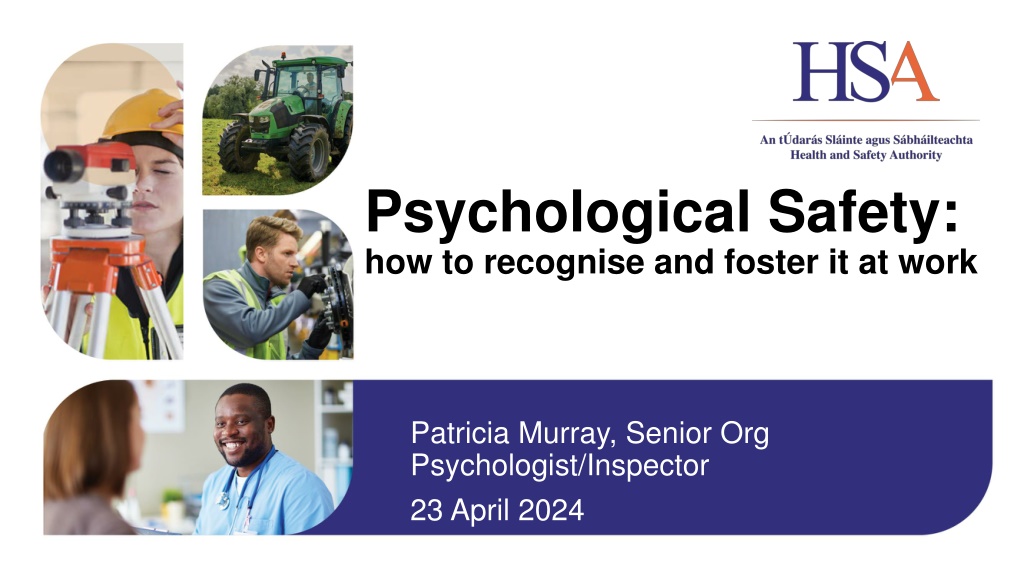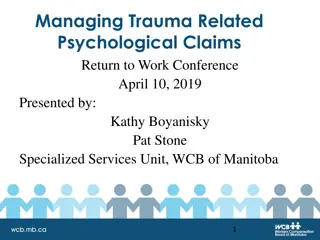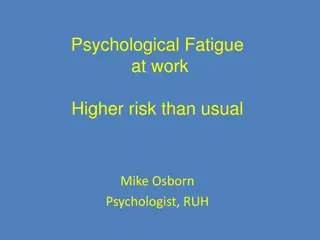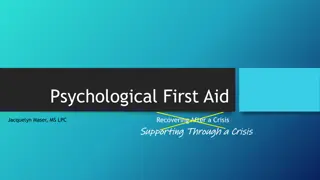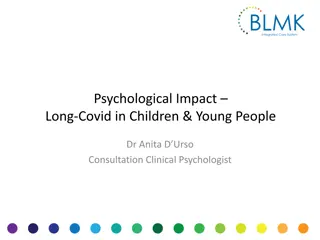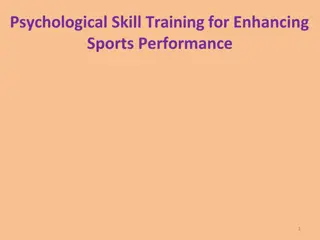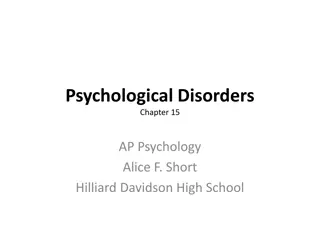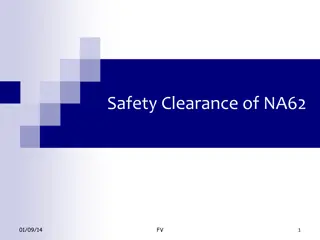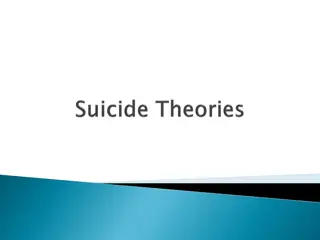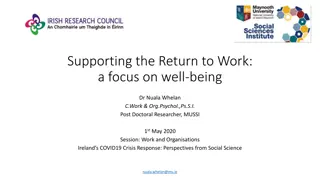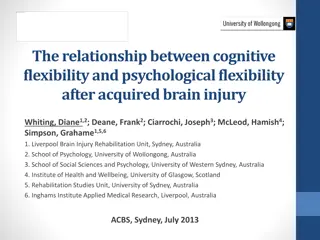Understanding and Fostering Psychological Safety at Work
Patricia Murray, a Senior Organizational Psychologist, discusses the importance of recognizing and promoting psychological safety in the workplace. The webinar covers evidence from research, the impact of threats on psychological safety and health, strategies for addressing prolonged exposure to unsafe environments, and employer responsibilities in creating safe work systems. The session encourages self-reflection and offers insights to enhance personal performance and well-being, both professionally and personally.
Download Presentation

Please find below an Image/Link to download the presentation.
The content on the website is provided AS IS for your information and personal use only. It may not be sold, licensed, or shared on other websites without obtaining consent from the author. Download presentation by click this link. If you encounter any issues during the download, it is possible that the publisher has removed the file from their server.
E N D
Presentation Transcript
Psychological Safety: how to recognise and foster it at work Patricia Murray, Senior Org Psychologist/Inspector 23 April 2024
Webinar on Increasing Psychological Safety at Work
Outline of Session Psychological Safety evidence from research Threat, psychological safety - and health Stress: Brain, mind, and body connections Threat as the cause of stress: influences perception Threat, immediate and secondary response and behaviour Prolonged exposure to unsafe psychological space Focus on solutions: what you can do Employer duties safe and healthy work systems
Focus on you To gain from session, commit to: Think of you doing your job now Reflect thoughts and feelings about you in non work settings How you ARE is an amalgam of your appearance to the world, your relationship to the world at that time your inner experience of the world, unfolding. Goal of session for you? Increased understanding of psychology, insights into you and others, .for improved performance of you for you .to improve your life, either at work or at home or both.
Psychologically unsafe: Threatened A disturbing feeling-state (threat) that can last from minutes to months Driving: the unforeseen sheep, the wet road, the emergency. Stop. What occurs? (biological/physiological/feedback loop, cognition, emotion) Primary effect of threat - directly felt Secondary effects: other similar or related threat > effects+ imagination/anticipatory effects* Effects of once-off critical incidents of traumatic typology Effects of on-going, micro-stressors, free-floating Context influences effects Context is mediated by YOU .in your work process, team around you, other teams, organisation
Threat. as we behave* it Behavioural features associated with feeling threatened are: High surveillance orientation seeking cause Perception of time alters (rushing) Short cuts in how we operate/what we do Errors in how we plan and think Reduction in social emotional consciousness Reduction in capacity to be see, think, hear, feel*
Performance outcomes Threat as distress ->hinders all performance, whenever, wherever. Interference - sporadic or long lasting Cue d to a time/place/situation ..or generalized Known to self - or unknown (consciousness degenerates) Wrongly attributed - often to unrelated factors for PS reasons Reduction in Psychological Safety-> lowered wellbeing state Reduces capacity for enjoyment and fulfillment directly and indirectly
Assessment for PS: Work-related Stress* Demands of the job type of work, variety, levels of, hours of.. Control over the working environment decision latitude, agency Support from peers and managers/stakeholders P Safety and trust in peers and leadership Relationships conciliatory or conflictual, trust, P Safety Role clear and unambiguous, non conflictual Change communication of change and ability to process and prepare WorkPositiveCI: assesses the Work environment. www.workpositive,ie
Threat, Stress and Health Psychosocial Hazards in environment -> ill-health outcomes Cardiovascular issues (Lancet 2019) Digestive disorders and long term medication dependency Hyper tension of varying degrees and long term medication dependency Depression and/or anxiety disorder Secondary effects including eating disorders and drink/drug use Unhealthy but sub clinical conflict-seeking anxiety related acts Secondary relationship breakdown and difficulties
You Understanding yourself and how your environment influences your feeling of being threatened or feeling safe Edmondson on Psychological Safety Models for developing PS Models for sustaining it*
1 Minute reflection Identify to yourself any behaviours you exhibit when stressed What is the feeling behind them, do you think? After this session: Can you identify any of the major causes of work-related stress for your team? Are they specific to any specific day of the week a repeating pattern - ie time of day a piece of work or type of work a way of working? (alone/in twos/in big groups etc)
What matters most for Psyche safety 1. Repeated prolonged exposure to threat 2. Seriously extreme one off threat 3. Threat which mirrors your personal circumstances 4. Little or no active supportive systems in place but minor threat 5. Support too distant or hard to access and minor random threat 6. Time pressures regarding case decision making 7. Lack of management role clarity and responsibility taking 8. No or low teamwork or collegiality 9. No relevant, meaningful tailored training for the tasks 10.No tertiary systems after-the-fact/reporting if things go wrong
Understanding what we know risk factors New employee and/or role Experience at task Context time of day/day of week Rushing/juggling Culture of cover up/denial/dismissal is oppositional to Psyche Safety Challenge of : Hierarchical power misuse Group think Old habits die hard
Risk Assessment and Control Measures A Model for oversight a framework for your team A method and rationale A process and flow Records and documents Secure, meaningful work with supportive supervisors and colleagues can dramatically enhance health and safety, wellbeing and performance metrics and opportunities at work
Organisational processes: leadership focus: Communicating sharing information, compassion and empathy, listen. (Having regular forum to pass information, and comment) Sense-making expectations influence sense-making by preferencing frames that make it more likely to see and experience what we expect to see and experience. (Reminders regarding unconscious processes and biased frames) Facilitating learning What are the shared protective factors n teams Making decisions gather information, seek advice, consult, deciding under duress is nto a good way to decide. Coordinating working - whoever creates direction, alignment, and coordination ..to work toward a shared purpose or goal. Systems and processes, formal and informal. (Fostering trust, small work hubs, role sharing)
You can help to set the scene Put PS on the agenda As a performance variable Ask open ended questions of team Listen to what is being said Seek solutions with each iteration of query Be prepared to change! Everyone should FEEL safe to behave more safely
Thanks you for listening Questions and answers? T: 0818 289 389 E: contactus@hsa.ie W: www.hsa.ie
